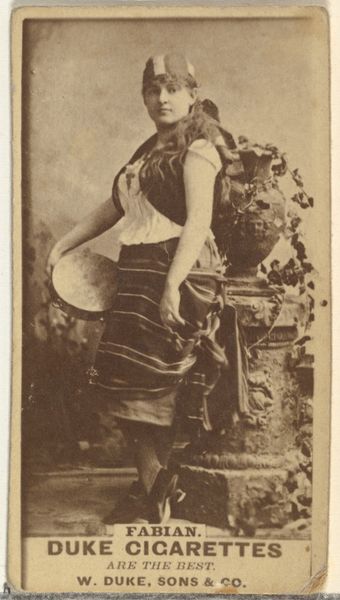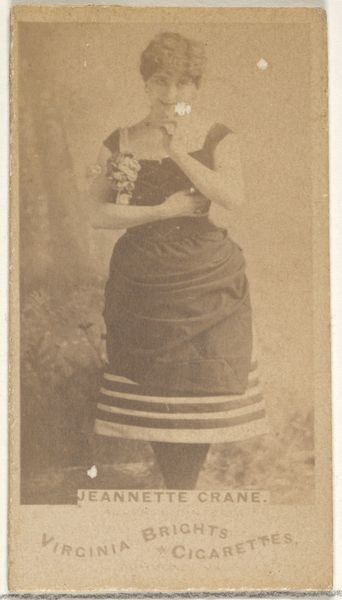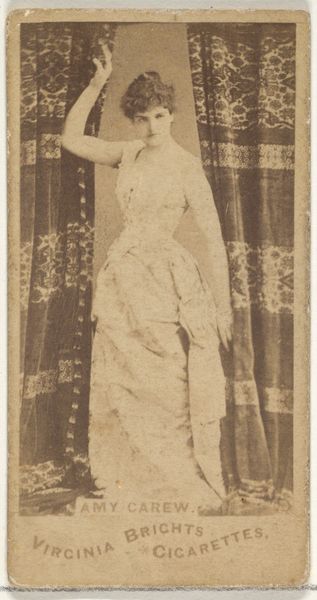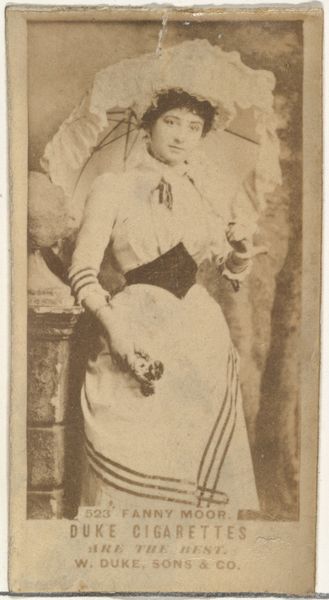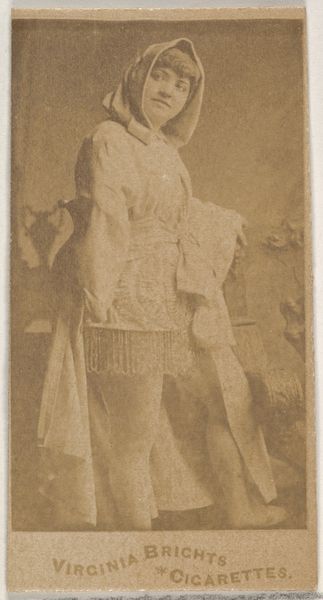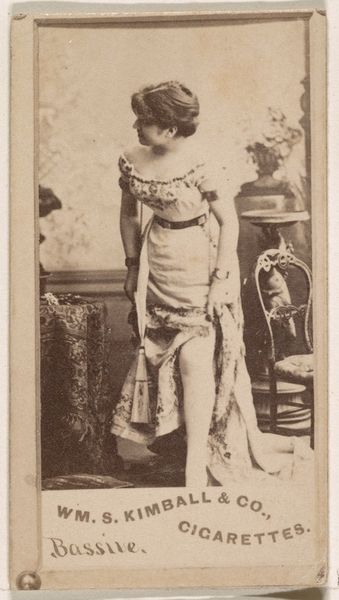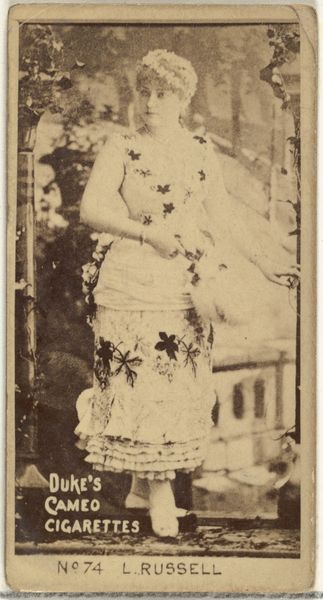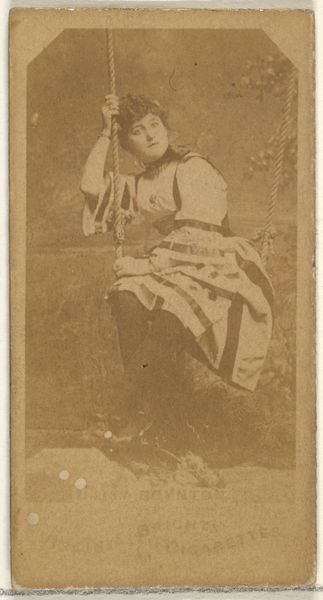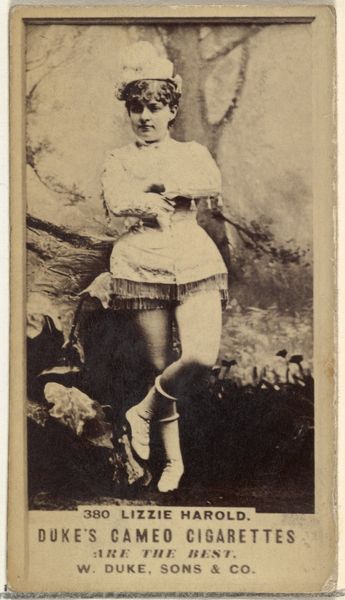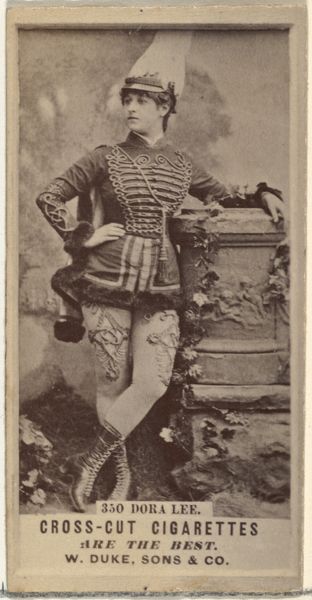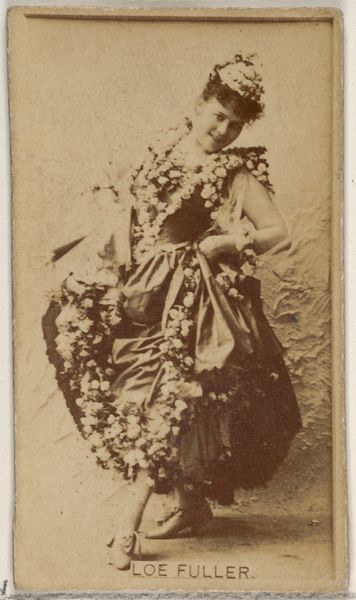
Card Number 78, Lillian Russell, from the Actors and Actresses series (N145-4) issued by Duke Sons & Co. to promote Cameo Cigarettes 1880s
0:00
0:00
drawing, print, photography
#
portrait
#
drawing
#
toned paper
#
photo restoration
# print
#
photography
#
19th century
#
men
Dimensions: Sheet: 2 11/16 × 1 3/8 in. (6.8 × 3.5 cm)
Copyright: Public Domain
Editor: This is Card Number 78, Lillian Russell, from the Actors and Actresses series dating back to the 1880s. It was made by Duke Sons & Co. to promote Cameo Cigarettes. It looks like a photographic print, and it has an interesting faded quality. What strikes you about this piece? Curator: This small card offers a fascinating entry point into the complex relationship between celebrity culture, advertising, and the burgeoning commodification of femininity in the late 19th century. Think about it – Lillian Russell, a renowned stage actress, her image circulated to sell cigarettes. How complicit was she, how much power did she wield? Editor: I see what you mean. So it’s more than just a pretty picture on a cigarette card? Curator: Precisely. The card itself is a material object embedded in social power structures. The "Actors and Actresses" series reinforced idealized images of beauty and success. Moreover, tobacco advertising was strategically marketed to appeal to both men and women, and here Russell is explicitly used as an emblem of feminine allure to drive sales. What’s particularly troubling to unpack is how it promotes smoking culture to an audience… it also encourages female viewers to accept harmful stereotypes for beauty or cultural access. Does this marketing contribute to, or resist, the period's rigid gender roles? Editor: It's eye-opening to think about all the layers within such a small image! Curator: Exactly! Examining the production, distribution, and reception of images like this is crucial to understanding the cultural dynamics of the time, including how identity, gender, and consumerism were being shaped. We are looking not only at portraiture but at historical narratives. What can art teach us about society? Editor: I’ll definitely look at advertising differently now. Curator: Me too. It goes to show how even seemingly insignificant objects can reveal profound truths about our society.
Comments
No comments
Be the first to comment and join the conversation on the ultimate creative platform.
